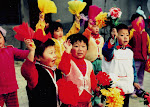 |
| The Terra Cotta Warriors represent an important of Xi'an's history. |
Besides writing articles, I'll be editing articles on Chinese history written by other Suite101 writers and choosing the best articles to feature on section pages.
I'm really looking forward to this new assignment. China has a history which dates back thousands of years, and is rapidly assuming the role of a super power today. I believe it is important for us to understand China's past so we can better understand it's future.
Join me on the site as we travel back in time.
Are you going to China?
If a trip to China is in your travel plans, please check out Cheryl's China and feel free to email me if you have any questions about traveling in China, especially Beijing, which is my specialty.



